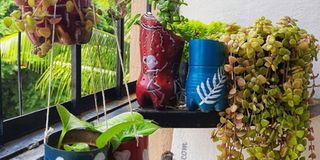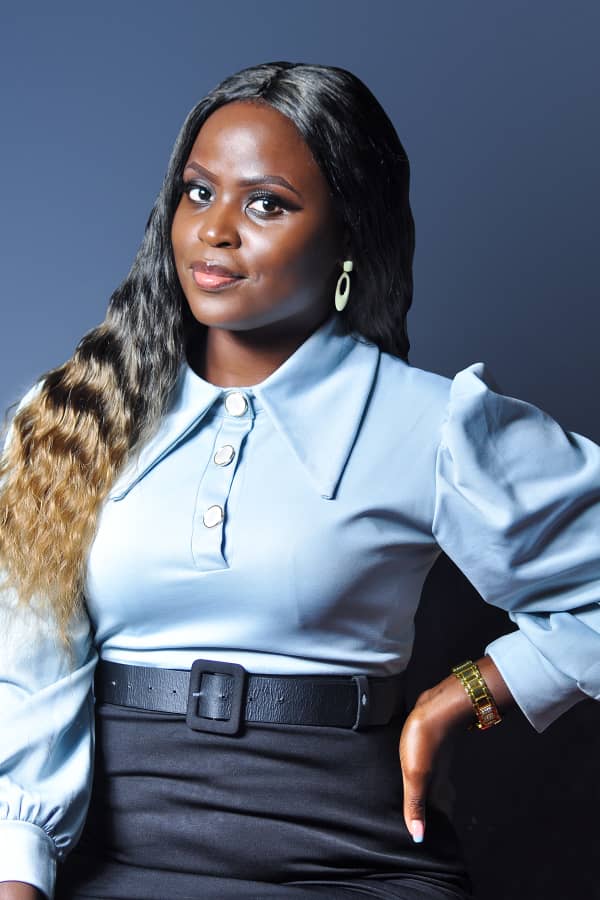Recycled planters for your living spaces

Recyle bottles for growing herbs. PHOTO/www.heartsomegardener.com
What you need to know:
Paper can be recycled four to six times whereas glass, steel and aluminum can be recycled endlessly. Here are some materials that can be recycled to create something new
Repurposed planters are easy to make, they are good for the environment and also give the user a chance to customise accordingly. Recycled planters as the name suggests are made from previously used materials allowing one to reduce their ecological footprint as it reduces waste.
Planters can be made from different materials such as plastic, paper, glass, steel and aluminum. Most of these materials can be recycled several times before they lose their viability, for instance plastics can be recycled seven to nine times before they are no longer viable.
Paper can be recycled four to six times whereas glass, steel and aluminum can be recycled endlessly.
Here are some materials that can be recycled to create something new and beautiful while slowing down the depletion of natural resources.
Used bottles
Ritah Alobo is an art and crafts expert, she repurposes bottles for both décor and plant growing.
“Glass bottles have the benefit of being very water-resistant; therefore they do not have a problem holding some dirt and a small plant. Due to their limited size, however, only small- and medium-sized plants should be planted in bottles,” she explains.
To make your bottles look beautiful, Alobo says one can spray paint them. Transparent bottles however, she adds can be left unadorned but rather include white decorative stones.
According to Alobo, plastic bottles make fantastic planters in your garden or in your kitchen.
“Plastic bottles can be used to plant individual herbs. Place your seedlings in one of these bottles and allow a few to line your window sill in the kitchen. Make sure they get plenty of sunlight, and in time you will have a fresh store of herbs to use while cooking right in your own kitchen. They can also be used for vertical gardens along a stone wall or fence,” she says.
Bulbs
Instead of trashing your bulbs, a little creativity can help you turn them into unique planters. Jenny Agaba says she has repurposed bulbs to become flower vases or planters.
“Light bulbs bring style to any space, large or small. They are easy to customise with moss, faux plants or other trendy air plants. You can set these bulb planters up as a showpiece and enjoy them throughout the year, or you can use them to grow a plant with colourful flowers and unique foliage that show through the transparent material,” she explains.
Agaba says the first step is to remove the bottom of the light bulb using pliers. Then with a simple push on the threaded end, you can pop out the bulb; no wire cutters are necessary. Fill it with soil and plant your favorite succulent. Hang it on a wall or use it as a table centerpiece.
“For hanging, soilless or air plants, you can drill a second hole at the other end of the bulb to allow for the plant to grow vertically and grace the space freely which also allows it to inhale all the air that it needs to thrive,” she says.
Concrete
Some gardeners have reservations about growing plants in concrete planters because they think it can be harmful to plants. The truth is because most cement and concrete mixes contain lime they are not conducive for growing particular plants.
Though not toxic, lime has a high pH level, making it highly alkaline which is not good for some plants. However, it is great to know that there are some plants that will thrive in this environment. Succulents are a great example of alkaline-loving plants and are a great fit for planting in a concrete or cement planter.
Fabric
If you have been trying your hand at indoor gardening, you will find fabric planters convenient and easy to use. Martha Namusoke says all your need is an old T-shirt or towel filled with soil to start on your magical journey.
It is important that the fabric you choose is BPA-free, breathable material and has felt-like texture. Just like regular planters, fabric planters are easy to use and washable.
These products are also reusable, which adds to the eco-friendliness of fabric planters. Namusoke says they are best used for growing most types of vegetables such as tomatoes, cucumbers, hot or sweet chili peppers, and green beans.
Old cloth or towel
If you have been trying your hand at indoor gardening, you will find fabric planters convenient and easy to use. Martha Namusoke says all your need is an old T-shirt or towel filled with soil to start on your magical journey.
It is important that the fabric you choose is (Bisphenol A) BPA-free, breathable material and has felt-like texture. Just like regular planters, fabric planters are easy to use and washable.
These products are also reusable, which adds to the eco-friendliness of fabric planters. Namusoke says they are best used for growing most types of vegetables such as tomatoes, cucumbers, hot or sweet chili peppers, and green beans.





